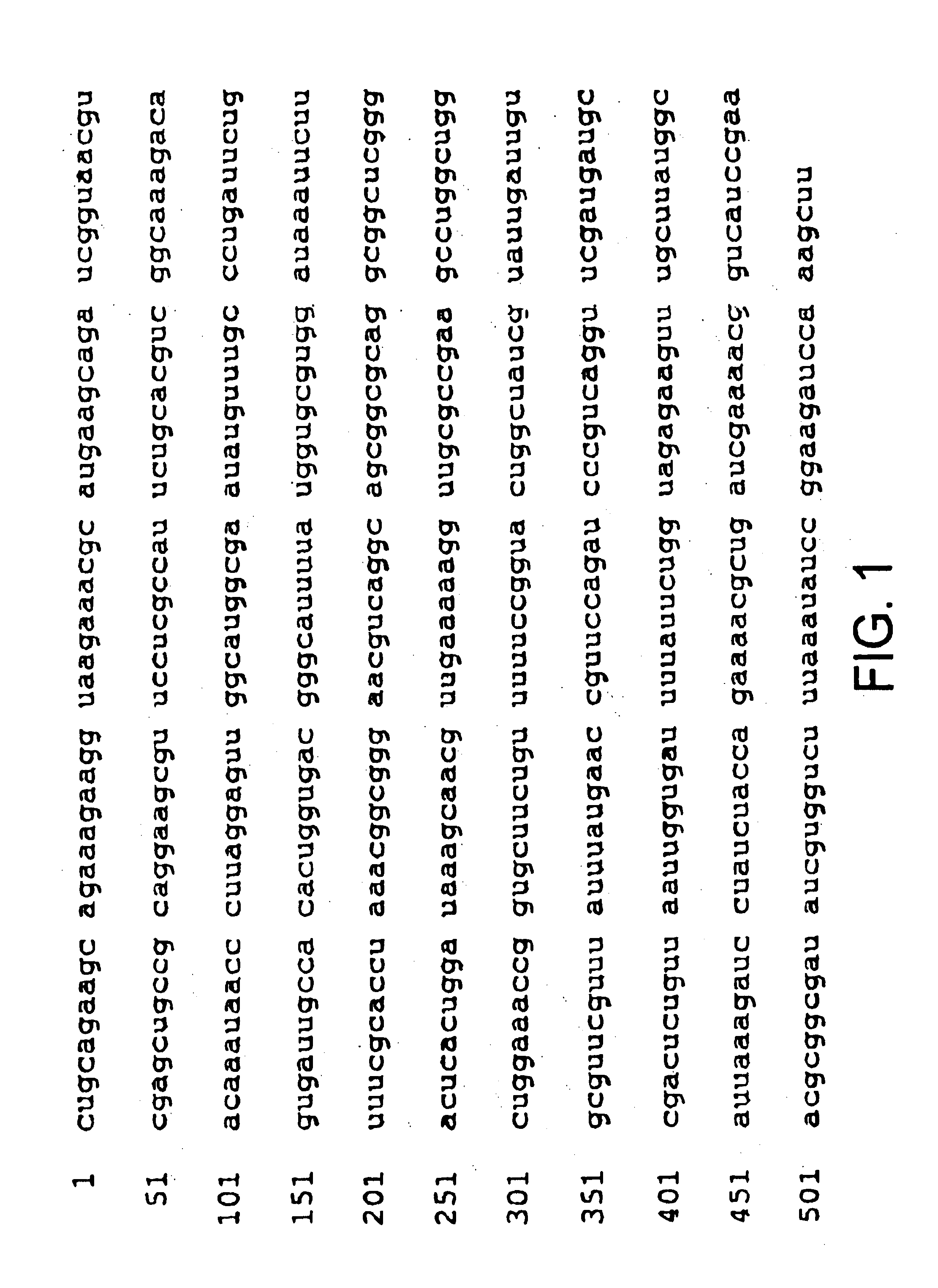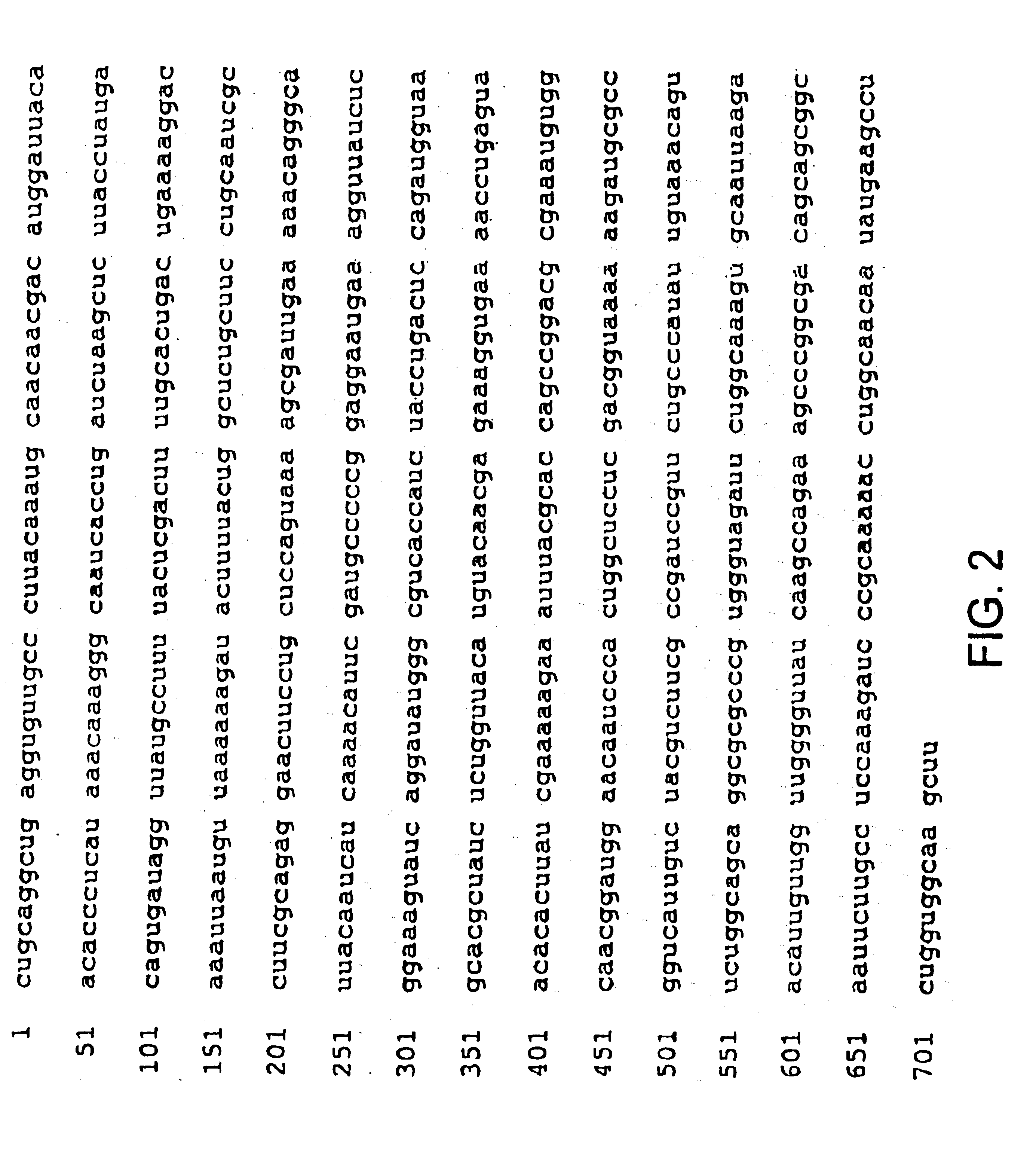Methods for identifying anti-microbial agents
a technology of antimicrobial agents and methods, applied in the field of methods for identifying antimicrobial agents, can solve the problems of time-consuming and labor-intensive approaches, inability to identify the required genes, and the products of some required genes may not be able to form conditional lethal mutants, etc., to facilitate rapid and efficient identification
- Summary
- Abstract
- Description
- Claims
- Application Information
AI Technical Summary
Benefits of technology
Problems solved by technology
Method used
Image
Examples
example 1
Generation of E. coli Chromosomal Library
[0068]Bacterial strains, plasmids and media. Luria Broth was made as previously described (Sambrook et al., 1989). M9 media (Sambrook et al., 1989) was supplemented with 0.5% casamino acids and 0.2% glucose. Antibiotics were used at the following concentrations in plates and broth: ampicillin, 100 μg / ml; spectinomycin, 100 μg / ml. Isopropyl-β-D-thiogalacto-pyranoside (IPTG) was used at 100 μM or at 1 mM as indicated.
[0069]Isolation and cloning of exogenous nucleic acid. E. coli chromosomal DNA was digested with either PstI and HindIII or EcoRI and BamHI and ligated into the vector pLEX5BA, cut with the same enzymes (Diederich et al, Biotechniques 16:916-923 (1994)). Plasmid pLEX5BA contains: I) a Bujard promoter that has binding sites for lac repressor centered at −22 and +11 relative to the start of transcription, ii) a multiple cloning site downstream of the promoter, and iii) an rrnBtlt2 transcriptional terminator after the multiple cloning...
example 2
Identification of Proliferation Genes by Antisense Inhibition
[0077]Seven clones obtained as described in Example 1 inhibited bacterial proliferation and contained gene fragments in an antisense orientation.
[0078]Three of the clones contained fragments of the lepB gene; pJB12, pJB37 and pJB40. pJB37 contains a 546 bp HindIII-PstI insert that expresses an RNA complementary to the carboxy terminal half of the lepB mRNA. The RNA sequence is shown in FIG. 1. LepB encodes the leader peptidase responsible for proteolytic cleavage of the signal peptide from preproteins. Leader peptidase is required for viability and a temperature sensitive lepB mutant lyses at the nonpermissive temperature.
[0079]A fragment of an uncharacterized ORF was cloned twice in antisense orientation in pJB39 and pJB53. The antisense clone pJB53 contains a 714 bp PstI-HindIII fragment of this putative ORF, designated herein as viaA (viability inhibited by antisense) and expresses an RNA that is complementary to the pu...
example 3
Identification of Proliferation Genes by Sense Inhibition
[0107]Four of the clones described in Example 1 inhibited bacterial proliferation and contained gene fragments in sense orientation. Plasmid pJB3 contained a fragment of the secA gene in sense orientation. Plasmid pJB60 contained a fragment of the ugpB gene in sense orientation. Plasmids pJB55 and pJB58 each contained a fragment in the sense orientation which expressed portions of genes having sequence homology to the E. coli fimF and fimD genes (located at 34 min on the E. coli map).
[0108]The insert in the secA dominant lethal clone, pJB3, was identified as an 836 bp PstI-HindIII fragment coding for yacA and the N-terminal 39 amino acids of the secA protein. The DNA sequence of the insert is shown in FIG. 11. SecA is an ATP-dependent translocase of secreted proteins located at the cytoplasmic face of the membrane. SecA protein regulates its own translation by binding to a site overlapping the ribosome binding site, which caus...
PUM
| Property | Measurement | Unit |
|---|---|---|
| temperature | aaaaa | aaaaa |
| temperature | aaaaa | aaaaa |
| ionic strength | aaaaa | aaaaa |
Abstract
Description
Claims
Application Information
 Login to View More
Login to View More - R&D
- Intellectual Property
- Life Sciences
- Materials
- Tech Scout
- Unparalleled Data Quality
- Higher Quality Content
- 60% Fewer Hallucinations
Browse by: Latest US Patents, China's latest patents, Technical Efficacy Thesaurus, Application Domain, Technology Topic, Popular Technical Reports.
© 2025 PatSnap. All rights reserved.Legal|Privacy policy|Modern Slavery Act Transparency Statement|Sitemap|About US| Contact US: help@patsnap.com



